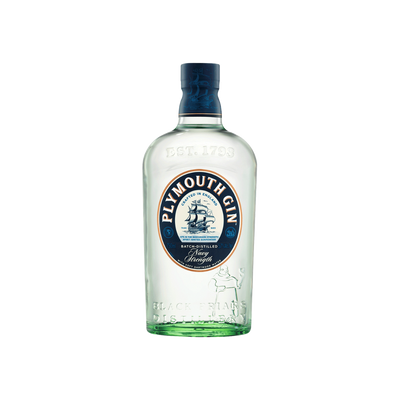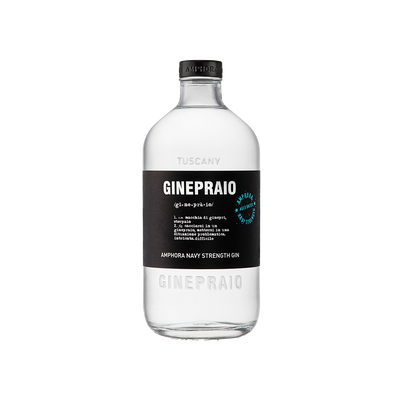High Proof Gin
What is High Proof Gin?
High Proof Gin represents a specific category of Navy Strength Gin that packs considerably more punch than your standard bottle. These spirits clock in at a minimum of 57% ABV (114 proof), which was historically the strength needed to prove that gunpowder would still ignite if accidentally soaked with the gin. The higher alcohol content doesn't just add fire – it carries botanical flavors more intensely and creates cocktails with serious backbone that won't get lost when mixed with other ingredients.
Learn More About High Proof Gin
What makes High Proof Gin unique?
High proof gin stands apart from traditional navy strength expressions by pushing alcohol levels well beyond the standard 57% ABV threshold, often reaching 60-70% ABV or higher, which intensifies botanical flavors while demanding more careful mixing techniques. Unlike classic navy strength gins that focus on historical maritime traditions and balanced juniper profiles, high proof variants often showcase experimental botanical combinations that can withstand the aggressive alcohol content without becoming harsh or unpalatable. These spirits require different dilution ratios in cocktails and offer bartenders the flexibility to build drinks with precise flavor control, making them tools for craft cocktail creation rather than simple strength demonstrations.
How is High Proof Gin made?
High proof gin starts with the same botanical distillation process as regular gin, but distillers simply add less water during the final proofing stage to maintain higher alcohol content, typically ranging from 50% to 57% ABV or even higher. Some producers achieve this strength by using multiple distillations or by employing vapor infusion methods that concentrate both alcohol and botanical flavors simultaneously. The key lies in balancing the intense alcohol heat with robust botanical flavors that can stand up to the higher proof without becoming harsh or undrinkable.
How do you drink High Proof Gin?
High proof gin shines brightest when mixed into cocktails where its bold botanical intensity can balance against other strong flavors - think classics like the Negroni, Aviation, or Last Word where the extra strength prevents the gin from getting lost. While you can sip it neat or on the rocks to appreciate its concentrated botanicals, most people find the higher alcohol content overwhelming without some dilution. The robust nature of high proof gin makes it perfect for spirit-forward cocktails and punches where you want the juniper and botanical complexity to cut through citrus, liqueurs, and other mixers without disappearing entirely.
How do I choose good High Proof Gin?
When selecting a high proof gin, consider your intended use first—navy strength gins around 57% ABV work beautifully in citrus-forward cocktails like Aviation or Gimlets where you want the botanicals to punch through acidic mixers, while something closer to 50% ABV offers more versatility for both sipping and mixing. Look for gins that maintain botanical balance at higher proof rather than just amping up the juniper; quality producers will adjust their botanical bills to account for the extra alcohol strength. Your cocktail choice should guide your selection: choose a London Dry style high proof gin for classic stirred drinks where you want clean juniper character, or opt for a contemporary style with complementary botanicals if you're making modern cocktails with unusual ingredients.
Nutritional Information
Typical Calorie Range per Ounce: 90-110 calories
Typical Carbohydrate Range per Ounce: 0-0.1 grams
Typical Sugar Range per Ounce: 0 grams
Typically Gluten Free: Yes
High proof gin typically contains more calories per ounce than standard gin due to its higher alcohol content, but it remains virtually carb-free and sugar-free. Most gins qualify as gluten-free since the distillation process removes gluten proteins, even when made from wheat-based spirits. The botanicals used in gin production don't contribute meaningful calories or carbs to the final product.
Keep in mind that individual brands may vary, and some specialty gins might include additives that could affect these numbers. Always check the specific product label and manufacturer information to confirm gluten-free status, especially if you have celiac disease or severe gluten sensitivity.
Scrolled this far? Your reward? High Proof Gin Trivia!
- Navy Strength gin earned its name because British naval officers would literally set it on fire to test if their rum rations were being watered down. At 57% ABV (114 proof), gunpowder soaked in the spirit would still ignite. Gin distillers borrowed this proof point, and now Navy Strength gin must meet this same flammable standard. If your gin won't light gunpowder, it's not the real deal.
- High proof gin actually tastes different than its lower-proof cousin, not just stronger. The extra alcohol acts as a solvent, extracting different compounds from botanicals during distillation. This means botanicals like cardamom and angelica root release oils and flavors that simply can't be captured at lower proofs. You're not just getting more alcohol – you're getting flavors that literally can't exist otherwise.
- Bartenders secretly love high proof gin because it makes better cocktails, even when properly diluted. Starting with a 114-proof gin and diluting it down creates a more stable emulsion in cocktails than using 80-proof gin straight. The higher alcohol content helps marry ingredients together and prevents separation. It's like cooking with high-quality stock versus water.
- Plymouth Gin holds the trademark on "Navy Strength" terminology, but they're not the only ones making it. Other distillers must use creative names like "Barrel Proof," "Overproof," or "Gunpowder Proof" for their high-alcohol gins. This legal quirk means you might walk past incredible high-proof gins simply because they can't use the most recognized name for the category.
- High proof gin was originally created for tropical climates where lower-proof spirits would spoil in the heat. British colonies needed spirits that could survive months-long sea voyages and sweltering temperatures without going bad. The extra alcohol acted as a natural preservative. Today's craft distillers are reviving these robust recipes not for preservation, but because they've discovered these gins simply taste more complex and interesting.
Higher-proof spirits can be intense. Mix carefully, taste thoughtfully, and enjoy responsibly.
Gift message (optional)



